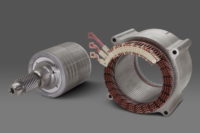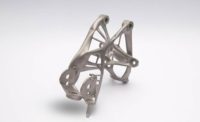Electric Vehicle Manufacturers Explore 3D Printing
Fast Radius Sees Printed Parts as Key to Successful EV Manufacturing
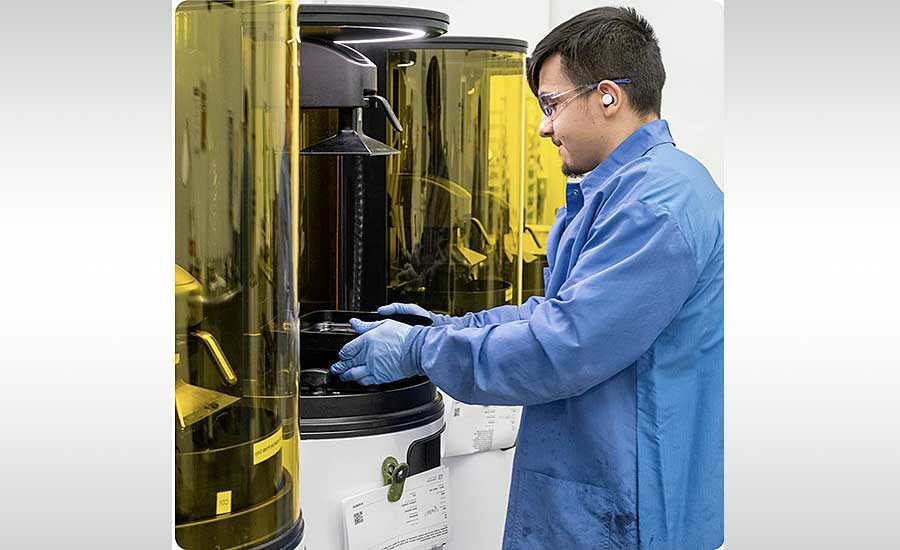
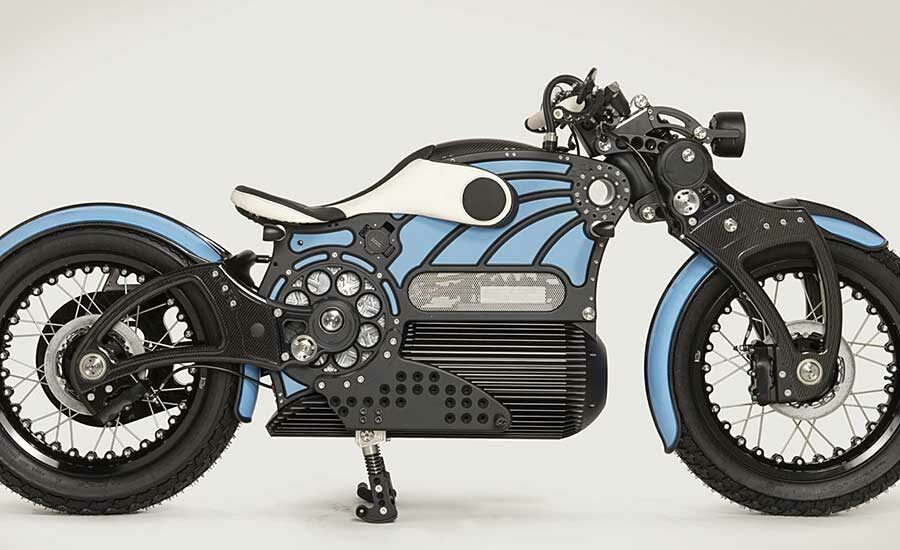
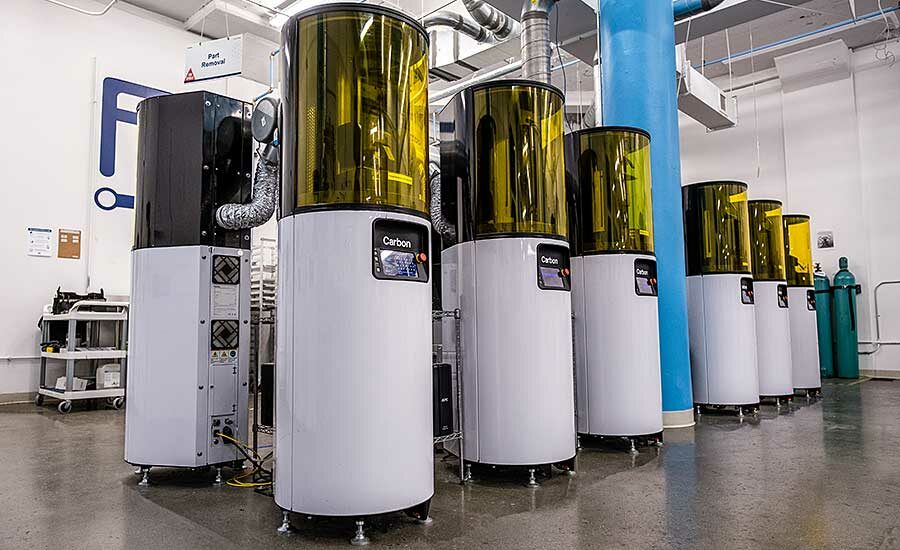



Additive manufacturing is a popular alternative to traditional plastic injection molding, metal casting and metal stamping, because it enables engineers to consolidate parts and produce components in complex shapes. The technology is used in a variety of industries, ranging from aerospace to medical devices. In recent years, it has gone from a low-volume prototyping tool to a high-volume process that can mass-produce small, nonstructural metal or plastic parts.
Electric vehicle manufacturers and suppliers are also intrigued by production-ready printed parts. In fact, automakers ranging from Ford and Volkswagen to startups such as Arash Motor Co. and Rivian are investing in additive manufacturing technology.
Another EV manufacturer that is bullish on the technology is Curtiss Motorcycle Co. The 30-year-old Leeds, AL-based company is named after Glenn Curtiss, an early aviation pioneer who was a contemporary of the Wright Brothers. Curtiss also was an innovator who created a variety of motorcycles and recreational vehicles.
Curtiss Motorcycle has developed several high-end niche vehicles, such as the Curtiss One and the Zeus 8, that use printed parts. In fact, the vast majority of the Curtiss One’s parts are produced by Fast Radius Inc., a digital manufacturer that ships the parts to Curtiss for final assembly.
Fast Radius is an additive manufacturing company that specializes in production-ready parts. It mass-produces plastic parts for customers such as Husqvarna, Rawlings, Steelcase and TE Connectivity.
Fast Radius also recently formed a strategic partnership with UPS that enables on-demand additive manufacturing to play a key role in supply chain logistics. In addition to its flagship factory on the West Side of Chicago, Fast Radius operates a microfactory at the UPS Worldport facility in Louisville, KY.
“With our cloud manufacturing platform and our expertise in additive, we are able to execute on complex production processes and get [new products] to market faster,” says John Nanry, chief manufacturing officer at Fast Radius. “Our mission is to make new things possible.”
“The quality of Fast Radius’ work and the efficiency of their manufacturing allows us to make our dream motorcycle a reality,” adds H. Matthew Chambers, CEO of Curtiss.
Rather than using off-the-shelf parts to convert a traditional gasoline-powered design into an electric machine, Chambers and his colleagues developed a next-generation motorcycle specifically designed for electric propulsion.
“Electric power gives us huge advantages in terms of design and performance that we simply haven’t had before,” claims Chambers. “This technology gives us the ability to transcend the traditional motorcycle design limitations and take our bikes to a whole new level in every respect.”
Additive manufacturing enables Curtiss to quickly scale up production of its motorcycles to meet demand.
Autonomous & Electric Mobility recently asked Nanry to discuss how additive manufacturing technology can aid other EV manufacturers.
AEM: What role do you see additive manufacturing technology playing in the future of electric vehicles?
Nanry: The basic characteristics of the EV market make it a really good fit for additive manufacturing as a production process. Electric vehicles fit right into the sweet spot of additive manufacturing, because most manufacturers are currently faced with low production volumes and highly uncertain demand. Whether it’s a new startup or a legacy automaker, speed to market matters. At the end of the day, it’s about materials and costs.
AEM: Are you seeing more interest in additive manufacturing today?
Nanry: Absolutely. We have definitely seen an overall increase in awareness of what the technology can do. More companies are looking for a cost-effective alternative to traditional plastic injection-molding processes, especially if they need fewer than 50,000 parts a year.
AEM: What specific types of vehicle components are ideal candidates for 3D printing applications?
Nanry: Electrical connectors are a really big area. They can be very tiny and precise, which drives up the cost of tooling needed for traditional plastic injection molding. Interior brackets are another common application. With additive manufacturing, we can do design iteration in days rather than weeks or months.
AEM: What will it take before we see wider adoption of additive manufacturing in the EV industry?
Nanry: It all comes back to materials and costs. Additive manufacturing has become more cost-effective vs. plastic injection molding, but there’s still a long way to go.
Looking for a reprint of this article?
From high-res PDFs to custom plaques, order your copy today!





